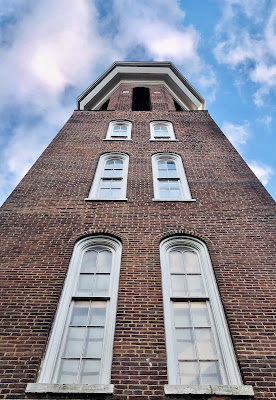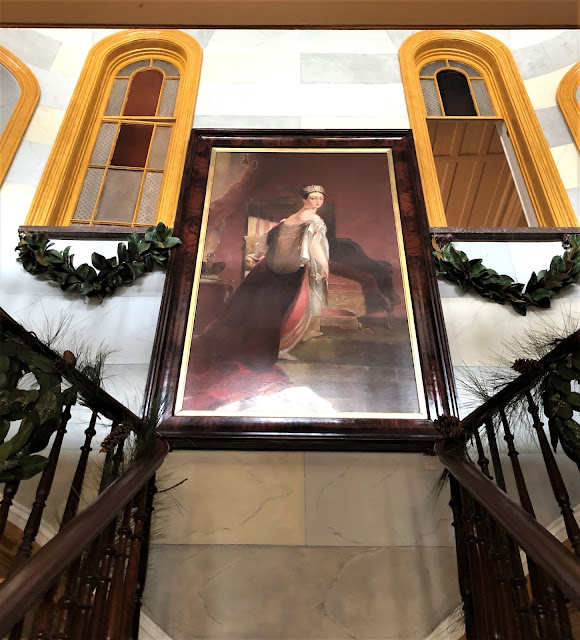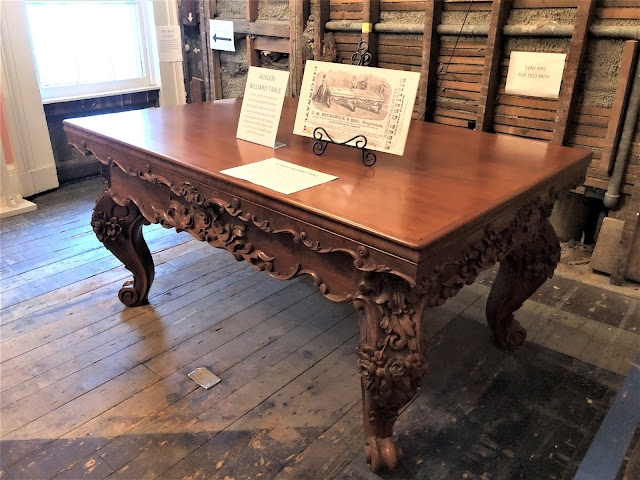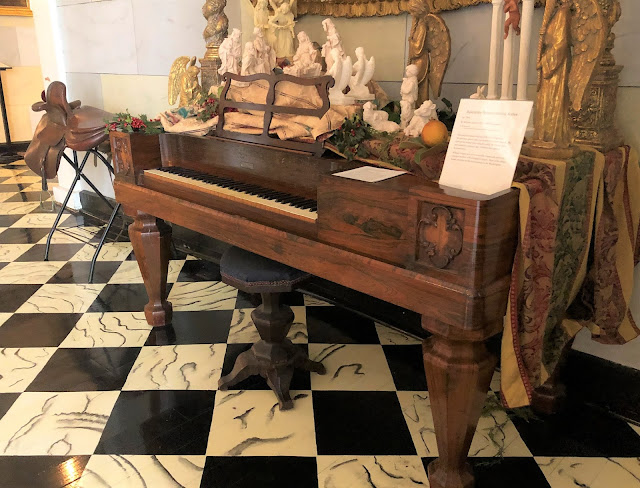 |
| The Belmont Mansion was the summer home of Adelicia Acklen's family. Today, it's part of the Belmont University campus. (CLICK ON IMAGES TO ENLARGE.) |
 |
| On Dec. 7, 1864, 7th Minnesota chaplain Elijah E. Edwards made this drawing of Acklen's summer estate. A water tower and greenhouse are at right, wagons and soldiers in center. (Read the chaplain's diary for descriptions of the Battle of Nashville.) |
 |
| Union General Thomas J. Wood used Belmont as a headquarters in December 1864. (Library of Congress) |
The estate dazzled Union soldiers.
“One of the pretty Garden of Eden spots of the world,” 74th Ohio Sergeant George Theodore Copeland called the estate in a letter to his sister in June 1862 – three months after the U.S. Army occupied Nashville.
“For acres the place is covered with hot houses,” he continued. “There is a tower on the place 110 feet high and by the time you get to the top of the winding stairs you are as tired as a ½ mile walk would make you.”
The mansion's impressive gardens astonished an Illinois soldier: “They are as handsomely layed out as the landscape gardner’s art can compass,” he recalled, “with statuary scattered all through the grounds and conservatories, arbors, cedars, spruce ‘galore’ and also an observatory.”
"Never before was [an] army headquarters so ornamented with such paintings and marbles," wrote a soldier in the 124th Ohio. "We, on the outside, were equally well off, for the spacious grounds were surrounded by nicely built stonewalls that were worked into chimneys ..."
Another Ohio soldier recalled: "“Our line of works here at Nashville were run right through a princely mansion on our company front. The fine lace curtains on gilded windows, with costly upholstery, rich furniture and Brussels carpets, all spoke of great wealth."
 |
| A circa-1864 image of the mansion and fabulous grounds taken from the 110-foot-high water tower. |
A “kind and hospitable hostess,” Acklen “willingly consented to set aside one-half of the house for our accommodations,” Charles D. Hammer, a member of Wood’s staff, recalled decades after the war. “It was very large, beautifully furnished, and one-half would afford us ample room.”
Willingly consented? In reality, Acklen probably had little choice.
Thankfully, the mansion — the home/headquarters for two weeks for Wood, Hammer and another member of the general's staff —did not suffer irreperable battle damage, as many houses in Fredericksburg, Va., had two years earlier. The occasional Confederate musket fire struck the mansion in the lead-up to the Battle of Nashville and during the battle itself on Dec. 15-16. (A 2.5-inch Confederate grapeshot was discovered in the front yard during construction of a sidewalk in 2013.) Acklen was "quite successful," the Chattanooga (Tenn.) Daily Times wrote in 1889, "in having Belmont protected from the ravages of marauders and vandals of both armies."
But the encamped U.S. Army ravaged the rest of Acklen's property and her adjoining farm, “Montvale." The art gallery east of the mansion suffered extensive damage.
 |
| The water tower impressed Union soldiers. |
Acklen — who married her third husband, a Nashville physician, after the war and died at 70 in 1887 — was eventually reimbursed nearly $22,000 by the U.S. government. The socialite wasn't exactly hurting for cash: In 1859, she spent $3,000 for a 4,015-pound bell for a Nashville church. "Her manner of living," the Daily Times wrote, "was regally sumptuous."
As Acklen edged into her 50s, she was determined to maintain her beauty. While in Paris after the war, "she resolved to have her face enameled by cosemetique process," according to a longtime Nashvillian, "and although warned it was a dangerous procedure, and might shorten her life, she persisted, with the declaration that she wished to be beautiful as long as she lived, no matter what the cost or risk to life she incurred."
On Monday (hat tip, Andy Blair), I got an insider’s tour of Belmont, which decades after the war became a girls' academy and then the first building on the Belmont College campus. (Today the mansion is owned by the Belmont Mansion Association and Belmont University. It's open to the public for guided tours.)
 |
| A view looking south from the cupola -- that's the water tower in the distance. (CLICK TO ENLARGE.) |
The tour highlight was a visit to the 10-foot-high, original cupola, used by the Acklen family to view the heavens through a telescope and by Union Army observers to watch the battle to the south. Somehow I survived the journey back down to the second floor, grasping the shaky railings and gingerly navigating the narrow, wooden steps.
Sometimes it takes a lot of courage to be a Civil War rambler.
 |
| This water fountain on the estate is in the same location it stood during the Civil War. |
 |
| These sculptures of Roman big-wigs were also displayed in the mansion in 1864. |
 |
| This mantle clock was given to Adelicia and Joseph Acklen as a wedding gift by President James Polk in 1849. Joseph, a wealthy, slave-owning planter and lawyer, died in 1863. He was Adelicia's second husband. Her first husband, Isaac, died in 1846. |
 |
| This huge painting of Adelicia Acklen also adorned the mansion during General Thomas Wood's two-week stay in December 1864. |
 |
| A massive painting of Queen Victoria, purchased by Adelicia Acklen, hangs near the landing of a staircase leading to the second floor. |
 |
| A section of the war-time billiard table in a first-floor room. |
 |
| An exquisitely painted ceiling in a first-floor room. |
 |
| An ornate vase in a second-floor bedroom. |
 |
| Did drunken Union brass hold singalongs at Adelicia Acklen's piano? |
-- Have something to add, correct? E-mail me at jbankstx@comcast.net
SOURCES
- Adelicia Acklen war-time damage claim, National Archives, Washington, D.C. via fold3.com
- Chattanooga (Tenn.) Daily Times, Feb. 18, 1889
- Hammer, Charles D., "Reminiscences," April 1914, typewritten copy in Belmont Mansion Association archives
- Lewis, G.W. The Campaigns of the 124th Regiment, Ohio Volunteer Infantry, with Roster and Roll of Honor, Akron, Ohio, Werner Co., 1894)
- The Civil War Letters of George Theodore Copeland, Letter cited from June 2, 1862
- Mosman, Chesley, The Rough Side of War: The Civil War Journal of Chesley A. Mosman, 1st Lieutenant, Company D, 59th Illinois Volunteer Infantry Regiment, edited with biographical sketch by Arnold Gates, Basin Publishing Co., 1987
- Nashville Tennessean, Feb. 16, 1890

Very interesting! Thank you for sharing! George Slaton
ReplyDeleteThank you for sharing this post. We now have another site to visit in the greater Nashville area!
ReplyDelete